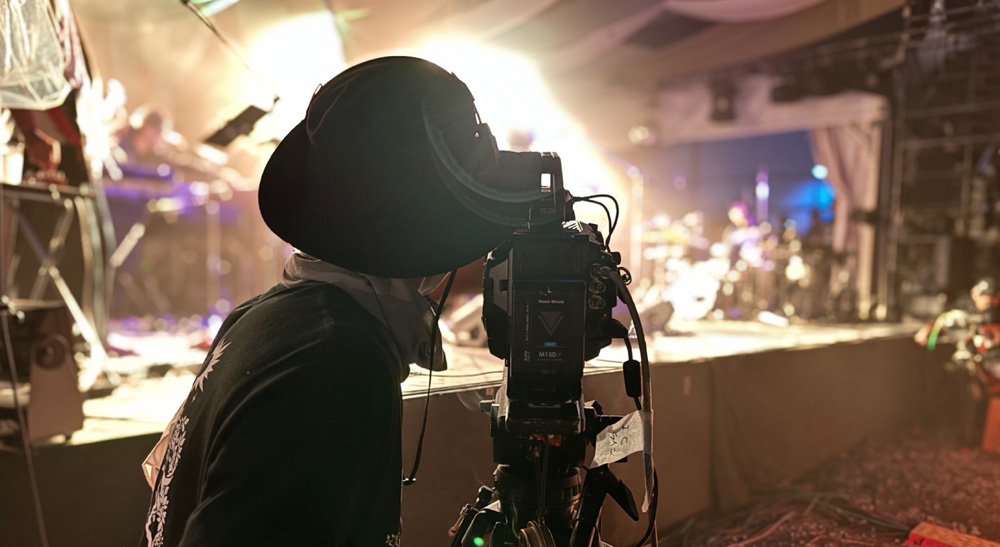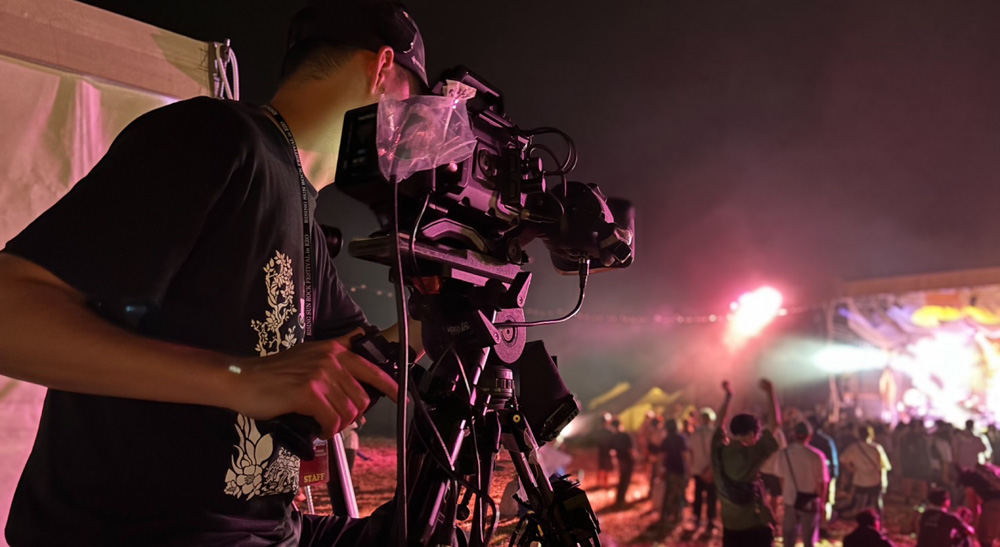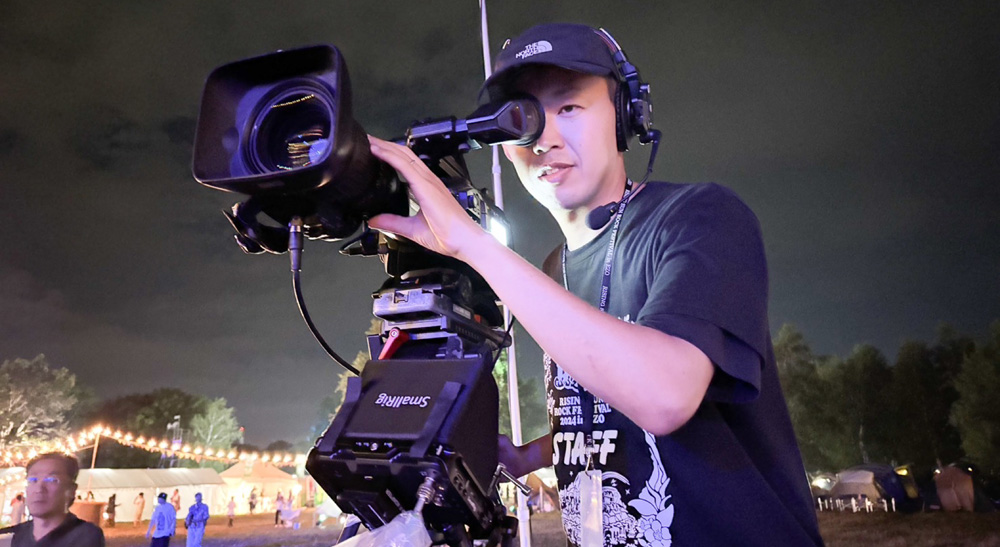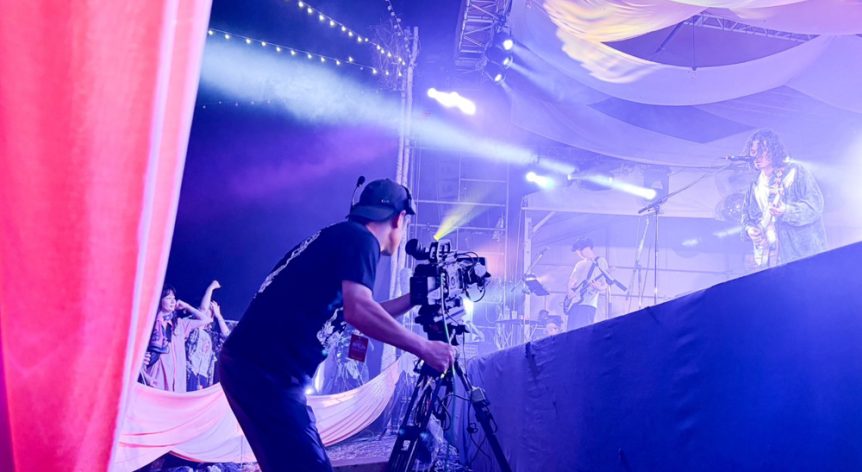Full production through post Blackmagic workflow captures performances at Bohemian Garden stage.
Fremont, CA, USA - Blackmagic Design today announced that its products were used at one of Japan’s largest outdoor music festivals, the Rising Sun Rock Festival. On the festival’s Bohemian Garden stage, Blackmagic Design’s URSA Mini Pro 4.6K G2 and Pocket Cinema Camera 6K Pro digital film cameras, along with Blackmagic Micro Studio Camera 4K G2 and ATEM Television Studio 4K8 live production switcher, were used to capture performances, with post production handled in DaVinci Resolve Studio.
Held over two days at open air stages beside Tarukawa Pier in the Ishikari Bay New Port area, which spans Ishikari and Otaru in Hokkaido, the Rising Sun Rock Festival is a major outdoor music event featuring multiple stages with simultaneous performances. Despite the impact of a typhoon, the event’s 24th edition in 2024 drew a crowd of 68,000 attendees. Performances from the event were later broadcast on Space Shower TV.
“For the larger stages, we used broadcast crews and system cameras equipped with ENG zoom lenses, but since Bohemian Garden is a stage set in a lush forest, we felt cinematic visuals would be a better fit. So for this stage alone, we chose to film at 23.98p using Blackmagic Design cameras,” said Akira Takasaki from WESS, the event’s organizer and production team.

The gear included three URSA Mini Pro 4.6K G2 units serving as main cameras along with one Blackmagic Pocket Cinema Camera 6K Pro, as well as two Blackmagic Micro Studio Camera 4K G2 units as sub cameras in fixed positions, paired with Video Assist 12G for monitoring. Lenses included Canon cinema zooms for the URSA Mini Pro 4.6K G2s, a Canon telephoto still lens for the Pocket Cinema Camera 6K Pro, and Panasonic lenses for the Micro Studio Camera 4K G2s. All footage was switched using the ATEM Television Studio 4K8 and recorded with a HyperDeck Studio HD Plus broadcast deck.
According to Ryo Kudo from Artisanal Inc., who served as director for the Bohemian Garden stage: “We recorded in Blackmagic RAW on the cameras while also capturing the switching out in ProRes from the ATEM switcher. The switching out was immediately shared with artist managements via Takasaki. Since so many artists performed, we needed to get approval for footage quickly, which required sharing visuals right after each performance. Only one or two songs per artist are used in the final TV broadcast, so the switching out was essential in choosing which songs to feature.”
The camera recording settings were 4K 23.98p using the Blackmagic RAW 12:1 codec. A LUT was created with the camera crew beforehand and used during filming.

“There were 14 artist performances, each lasting around 50 to 70 minutes. To balance file size and quality, we conducted camera tests and confirmed that the 12:1 compression was sufficient. Our data manager backed up footage during set changes between performances,” said Kudo.
He continued: “Three URSA Mini Pro 4.6K G2s were set up in front of the stage as main cameras. Since the amount of lighting varied depending on the artist, the built in ND filter was extremely useful. They were helpful not only for the camera crew but also for me during post production. We mostly used tripods for filming, but to capture the live energy, we also used the URSA Mini Pro 4.6K G2 for handheld shooting to get dynamic close ups of performers and emotional audience reactions. That’s why we equipped the cameras with the URSA Mini Shoulder Kit and URSA Viewfinder for quick handheld operation.”
Post production was done in DaVinci Resolve Studio. “With limited time, we edited and graded using the Blackmagic RAW footage based on the switching data. Color grading was done using the same LUT from the shoot, adjusted for lighting and weather changes. Thanks to the wide dynamic range of Blackmagic RAW, we could fine tune the image without compromising quality. The response was fantastic; my industry peers asked me, ‘How did you shoot this?’” said Kudo.

